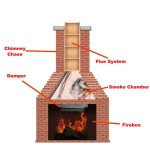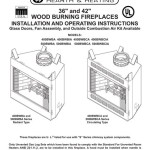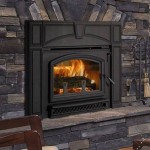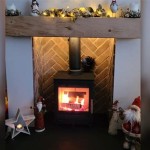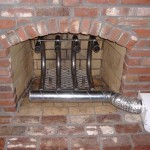Essential Aspects of Antique Fireplace Mantel Surround
Antique fireplace mantel surrounds are captivating architectural elements that embody historical charm and architectural artistry. These timeless pieces not only enhance the aesthetics of a room but also offer functional warmth and ambiance. Understanding the essential aspects of antique fireplace mantel surrounds is crucial for discerning collectors, interior designers, and homeowners seeking to incorporate these remarkable artifacts into their spaces.
Historical Significance: Antique fireplace mantel surrounds reflect the architectural styles and craftsmanship of their respective eras. From the intricate carvings of the Renaissance to the elegant lines of the Victorian period, each era left its unique imprint on these decorative elements. Identifying the historical period of a mantel surround can enhance its value and provide valuable insights into its origins and artistic style.
Material and Construction: The choice of material used in the construction of an antique fireplace mantel surround greatly influences its durability, aesthetics, and value. Common materials include marble, wood, stone, and cast iron. Marble mantel surrounds are renowned for their opulence and intricate carvings, while wooden mantel surrounds offer warmth and versatility. Stone mantel surrounds, such as limestone and granite, exude rustic charm and durability, and cast iron mantel surrounds are known for their strength and affordability.
Architectural Style: Antique fireplace mantel surrounds exhibit a wide range of architectural styles, including Georgian, Regency, Victorian, and Art Deco. Georgian surrounds are characterized by their symmetrical designs and classical ornamentation, while Regency surrounds are known for their delicate details and slender proportions. Victorian surrounds are often elaborate and feature intricate carvings, while Art Deco surrounds embrace geometric patterns and streamlined aesthetics.
Condition and Restoration: The condition of an antique fireplace mantel surround has a significant impact on its value. Minor repairs, such as filling cracks or reattaching ornaments, can enhance the appearance and longevity of the piece. However, major structural damage or repairs may diminish its value. It's advisable to consult with a qualified restorer to determine the extent of necessary restoration work and preserve the historical integrity of the mantel surround.
Placement and Function: Antique fireplace mantel surrounds can be positioned above working fireplaces or serve as purely decorative elements. When functional, the mantel surround should extend beyond the fireplace opening to provide adequate protection from heat and sparks. Decorative mantel surrounds can be placed on non-functional fireplaces or in other areas as focal points or display surfaces for artwork and collectibles.
Incorporating an antique fireplace mantel surround into a home is an opportunity to blend historical charm with modern elegance. By understanding the essential aspects of these architectural treasures, collectors and homeowners can make informed decisions, preserving the legacy of these timeless artifacts and adding warmth and grandeur to their living spaces.

Antique Fireplace Mantel 70 X 100 The Door

Antique Fireplace Mantel 66 ⅛ X 81 ½ The Door

Vintage Fireplace Mantel Recycling The Past Architectural Salvage

Gorgeous Mantel Victorian Fireplace Architectural Antiques Antique

30 Amazing Vintage Fireplace Designs For Most Unique Home Ideas Freshouz Architecture Decor Wooden Antique Mantels Surround

Old House Parts Company Architectural Salvage Antique Windows And Doors Hardware For Interior Exterior Home Improvement

Antique Wood Marble Carved Fireplace Mantels Oley Valley Architectural Antiques

Tall Antique Oak Fireplace Mantel 54 5 X 78 Architectural Salvage

Antique Fireplace Mantel Surround Architectural Salvage Victorian Rustic A107 Mantle Columns Legs Wooden Denmark

Antique Fireplace Mantel 72 X 47 The Door
Related Posts

